
Hungary
The city stands at the confluence of the Rivers Rába and Mosoni-Dunai (Little Danube) and has been an important trading centre since Roman times (when it was called Arrabona). Today it is a city of some 150,000 people, with an attractive old town, and a huge neo-baroque town hall. The cathedral was founded circa 1009 by King Stephen I. The city did not fall to the Turks until 1594, after years of fighting, and the city was known as the "burnt city". However the Turks were driven away in the early C17. Since world war two the old town has been surrounded by a ring of blocks of flats and industrial quarters.
Cathedral of Our Lady
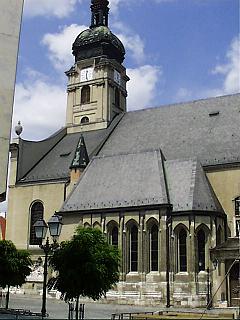 |
The cathedral of Györ is externally a large rather unnattractive building, not helped by its severe classical façade of 1823. It is surrounded by cobbled streets and to the west is the bishops palace with its white tower. From the south the one obvious survival of the medieval church can be seen, the gothic chapel of Szent László. I thought I was not going to see inside as the cathedral was locked but just as I was on the point of giving up the clock in the tower struck 2pm, and a man scuttled out from a nearby house and unlocked the north door. By then I had seen the whole of the exterior, and note that remains of the Romanesque apsidal east ends of the north aisle and choir are being exposed in a major restoration.
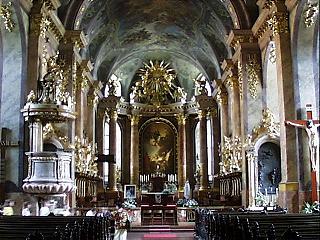
The cathedral was rebuilt 1635-50 to the designs of an Italian - Giovanni Battista Rava, but the tower was not built until 1680. Further alterations followed in 1770. There are rich fittings and much use of gilding. The ceilings have frescoes, although the gloom makes appreciation of these somewhat difficult.
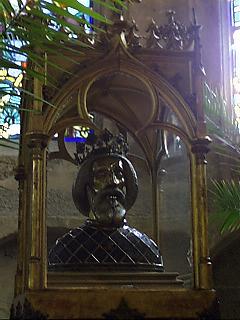
In the Gothic south-west chapel is the most famous artefact in the cathedral, the head of Szent László in a gilded silver reliquary dating from the fifteenth century.
St Ignatius
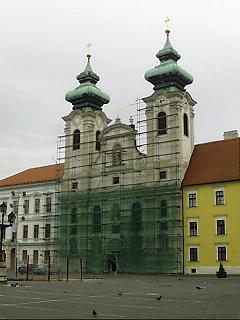
This church was rebuilt 1635-41 to the designs of Baccio del Bianco and stands in the Széchenyi tér. The church was undergoing a restoration of the two-towered façade, which were added to the church by Martin Witwer in 1726. The adjoining Jesuit monastic buildings are now a school.
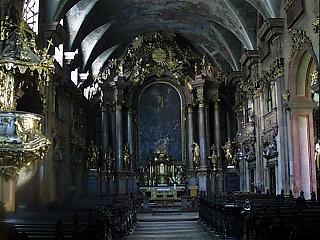
The interior, glimpsed through the glazed west narthex, is richly decorated and the frescoes are of 1744. The glorious pulpit was added in 1749.
Church of St Ann
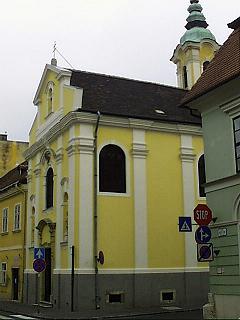
Nearby to the Jesuit church on the corner of Gorkij utca is the small former hospital chapel of St Ann, dating from 1730. This church had a wedding in progress, but has been recently restored and redecorated. It is filled with the expected exuberant baroque fittings.
Carmelite Church
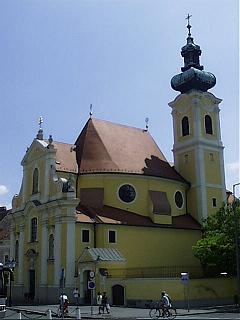
On the banks of the Rába, close to the bridge over the river, is Bécsi kapu tér and the Carmelite church. Built by the order's architect Martin Witwer 1721-5, it has an elliptical plane, with a west facade and a SE tower, alongside the short choir. This building, one of the most impressive in the city, was locked in the morning, lunchtime and early afternoon sadly, so I never got to see inside and admire the fine wood carving rumoured to be there.
Back to the Hungary Pages Intro and Index